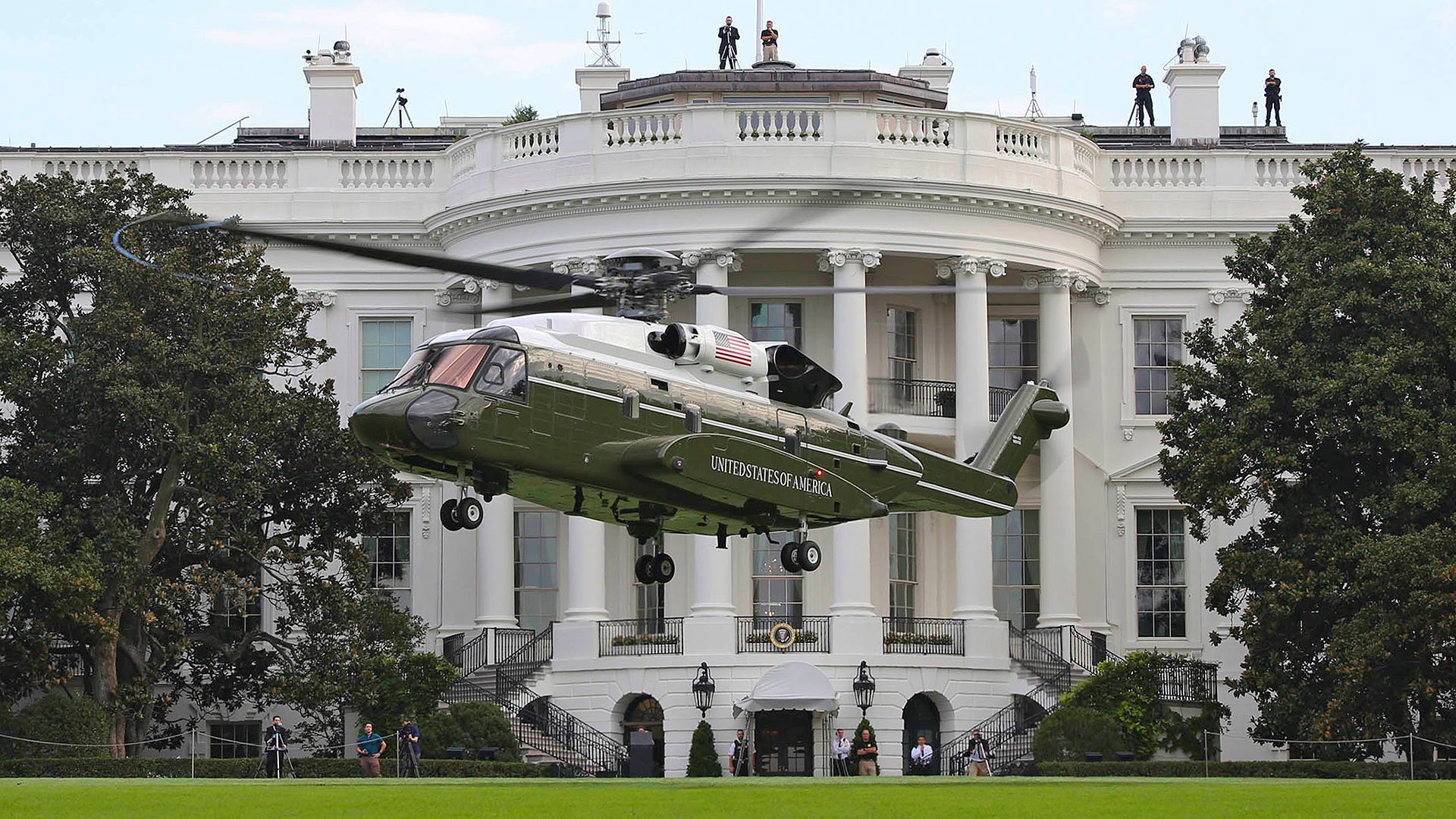We have the first images of not only a Sikorsky VH-92 Marine One replacement helicopter in its full ‘White Top’ presidential airlift colors, but also of that helicopter landing on the South Lawn of the White House. Although the Marine aviators of HMX-1 who fly the President around make landing at the White House look easy, it is not, with Marine One crews having to avoid a number of obstacles and touch down on exact markers placed on the lawn during a wide range of conditions and usually while being watched by throngs of onlookers and the global media.
The operation not only serves the President, their closest aides, and their family for daily travel needs, but it is also a key component of so-called Continuity Of Government contingency plans. During a crisis, Marine One helicopters would quickly make the jaunt from their forward staging point at Naval Support Facility Anacostia to the White House where they would scoop up the President and move them to safety at any of a number of pre-planned undisclosed and hardened locations.

The amazing photos come to us from our NAVAIR public affairs friends at Naval Air Station Patuxent River where the VH-92 is deep in testing. That testing is progressing well and the program is meeting or even beating budget forecasts according to recent reports. Risks still remain, but compared to many other high-profile defense programs, VH-92 has been largely unproblematic.
As we noted in our last update on the VH-92’s progress, which includes a ton of details and even some possible renderings of the aircraft’s interior, the new helicopter’s impact on the White House’s lawn was an outstanding issue for testers:
NAVAIR and Sikorsky, now a division of Lockheed Martin, had also not yet been able to find a way to prevent the force from the rotor blades from the destroying the grass and other plants on the White House’s South Lawn, which currently serves as the main helipad there.
The GAO report states:
“The lawn is a highly visible, size-constrained landing zone where damage to the White House grounds needs to be minimized. Currently, however, the program is not meeting a key system capability requirement to land the aircraft without adversely affecting the landing zone (including the White House Lawn).”
The test landings shown in these images likely helped further evaluate, if not alleviate, those concerns.

In all, 23 VH-92s will replace the current fleet of 11 VH-3Ds and 8 VH-60Ns, 21 of which will fly the President around and follow him or her nearly anywhere they go across the nation and abroad (yes, a pair of ‘White Tops’ are airlifted everywhere the President goes even if they are not used as primary transportation) or support HMX-1’s training needs. The two remaining helicopters will stay a NAS Patuxent River and will be used for ongoing developmental initiatives. The VH-92 is slated to reach initial operating capability in 2019 and fully replace the existing White Tops by 2023.

We continue to keep you up to date as America’s next presidential airlift helicopter marches towards its first operational flight with the President onboard.
Contact the author: Tyler@thedrive.com
